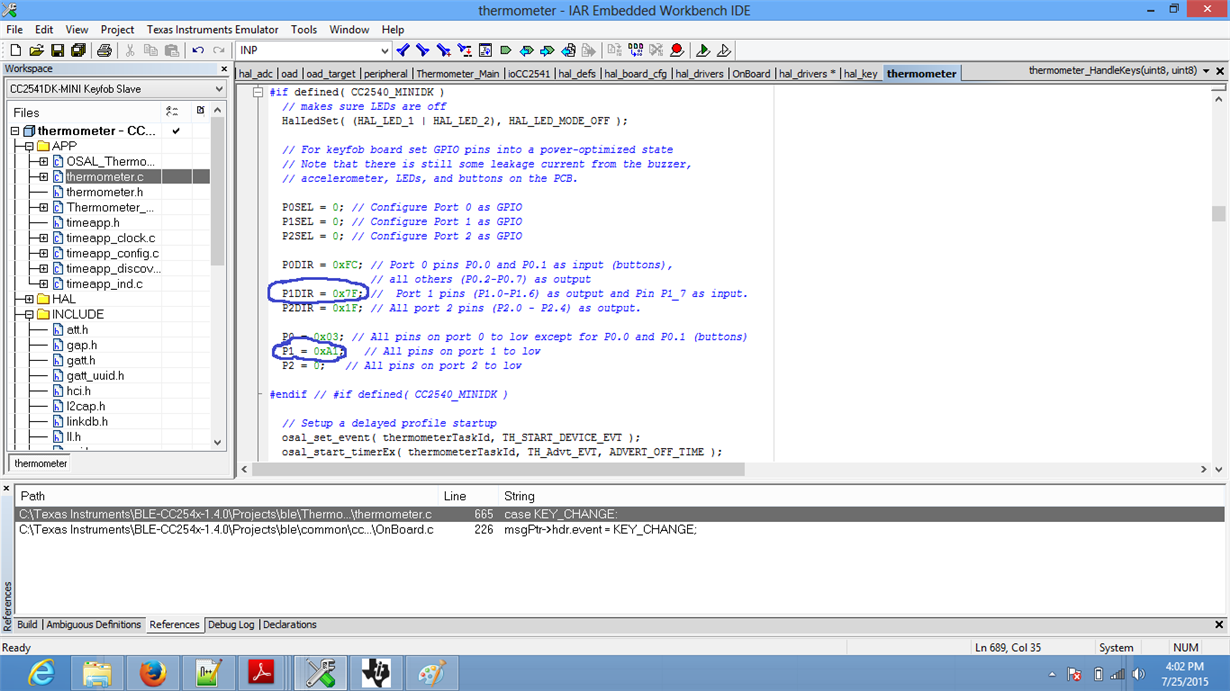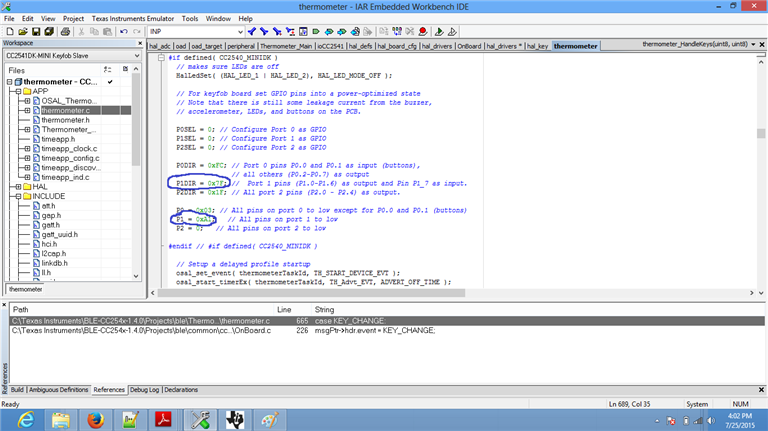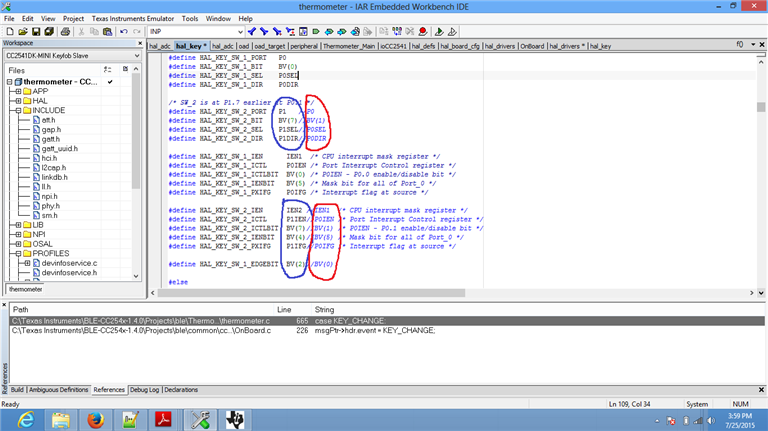Hii,
We have customized our PCB based on CC2541 and refers to keyfob schematic. We relocate switch from P0.1 to P1.7, But unable to operate it. It was working well at P0.1 on keyfob but not at P1.7 on customized board.
I have made the following changes in ,
1) hal_key.c ;
Note : current config is encircled in BLUE and earlier configuration in RED.
2) themometer.c
Note : Current config is encircled in BLUE.
I hope I made my point clear, if not please let me know what left.
Thanks in advance.
Regards,
Kumar Karan Jain










